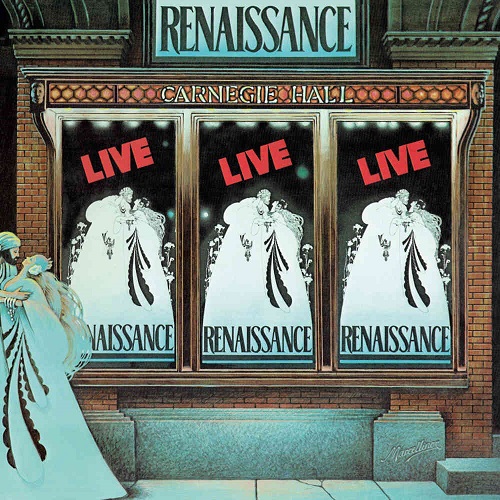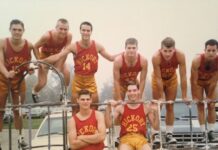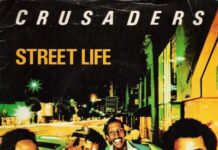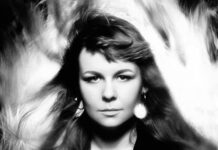Photos courtesy of Annie Haslam, Michael Dakota and William James
Throughout the decades, Carnegie Hall has been a benchmark of both cultural history and performance virtuosity.
Artists and bands spanning virtually every genre have graced the venue’s hallowed stage. Many have pressed their memorable real-time experiences onto vinyl (and/or subsequent formats). From Benny Goodman to Billie Holiday; Dave Brubeck to Harry Belafonte; Keith Jarrett to Simon and Garfunkel; Bill Withers to Stevie Ray Vaughan, Carnegie Hall — at least from a popular music perspective — can be regarded as both a venue launchpad to superstardom and the best source of homecoming to mark one’s distinctive career.
Rock legends Chicago would perform six shows there in 1971 showcasing the uniqueness and breadth of their first three albums. The Weavers would return to Carnegie in 1980 and leave those in attendance exclaiming “Wasn’t that a time!”
And 2021 marks 45 years since a UK-based ethereal progressive rock band with a penchant for symphony and sweeping tales graced this same stage, solidifying their American standing to great fanfare in the process.
Thousands had turned out to see Renaissance, a band formed by former Yardbirds Jim McCarty and Keith Relf yet with a completely revamped lineup by 1975. Still, the quintet’s perseverance and steady album stream helped expand their fanbase, especially given such folky, suite-like songs as “Ocean Gypsy,” “Prologue,” and “Can You Understand,” as well as the majestic presence of frontwoman Annie Haslam.
“I joined New Years Day 1971 and within four years we were playing in Carnegie Hall. That’s ridiculous, really, when you think about it,” Haslam told me recently, “I think we were nervous the first night. The third night was great.”
Haslam adds that the group’s whirlwind four years of activity began with her joining the band and then touring Germany with members just three weeks later.
“The band was doing well in Germany. That was amazing. I do remember that when we came back and started performing in England, we were doing some nice places but some of the smaller ones in the early days were like a pub in Wolverhampton … and I had to change in the toilets,” she said. “Things like that that I’ll never forget. Give us five pound — we got to pay all the gas and everything and whatever we got at the end of the night we split everything.”
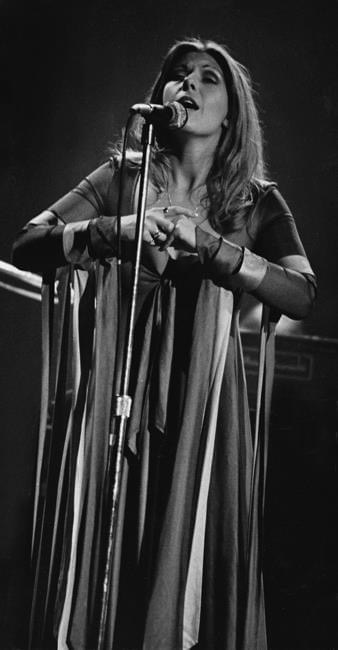
A woman fronting a rock band was certainly not uncommon in the early 1970s. We had Grace Slick helming Jefferson Airplane (which would then segue into Jefferson Starship). Fairport Convention had the glorious Sandy Denny (to date the only person to guest sing on a Led Zeppelin song). But Haslam would prove a force all her own — a rock and roll Guinevere to prog rock Knights of the Round Table.
1973’s Ashes Are Burning — boasting the talents of keyboardist John Tout, bassist Jon Camp (whose Rickenbacker melodies brilliantly weave in and out of each track), drummer Terence Sullivan, and guitarist Michael Dunford – is a standout album, merging genres and styles to embody everything from a church mass to a full-bodied complement to Yes’ “I Get Up, I Get Down” movement from “Close to the Edge.” The album would go on to be ranked number 31 in Rolling Stone’s list of the “50 Greatest Prog Rock Albums of All Time.” This album, along with three others in the Renaissance catalog — 1972’s Prologue, 1974’s Turn Of The Cards, and 1975’s Scheherazade And Other Stories — would help the band find sure footing with American audiences.
“The first [US] tour was in 1973. I came over with Wishbone Ash. I remember doing my first interview with WMMR in Philadelphia — Ed Sharkey — and he was playing Prologue like crazy. Played us constantly because they could. People started to love the band,” Haslam said. “Everybody really latched onto the song “Ashes Are Burning.””
Where other prog bands like Jethro Tull and Gentle Giant only harkened back to sounds of yore occasionally to earn their fame — Renaissance proved different because they were unafraid to fully dive in and sound like they were truly living in the past.
“We didn’t think of ourselves as anything pigeon-holed or anything. We just didn’t think of it. We didn’t even know what a prog band was back then. I think the five of us together at that point, we just fit together perfectly,” Haslam told me. “We never really thought about different types of music. We all loved classical music. When I got together with the band, we all loved Shostakovich and Rachmaninov. Very dramatic music.”
Haslam’s one-of-a-kind five-octave vocal range would also elevate the band above contemporaries. Her singing voice was first molded in training sessions with opera singer Sybil Knight.
“She said, ‘Your voice is perfect for opera. It’s got an unusual tone, but it’s got everything there.’ I said I didn’t want to do that. I don’t want to be stuck in one place doing the same thing every night. And I didn’t even think about all the hard work that would have to go into it or that you’d have to learn French and Italian and German,” Haslam said. “I just knew that wasn’t for me.”
Haslam would soon shift from thinking opera to thinking more rock and roll. It would not be long before she would be asked to audition for Renaissance.
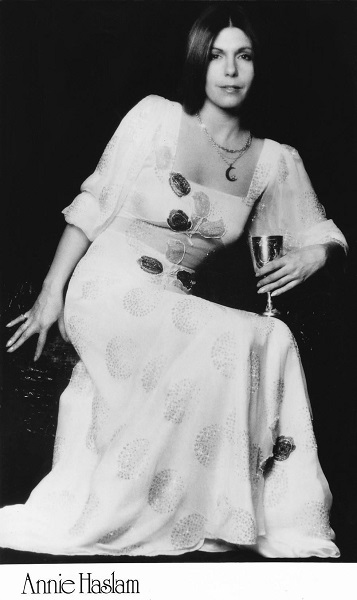
“I bought the first Renaissance album [Renaissance] and I learned everything back to front,” she said. “When I went to the audition, they asked me to sing “Island” and I got the job. I knew it as soon as I walked in it would be perfect for me.”
Fast forward to 1975 and the band is in New York City for its series of Carnegie dates. Adding to the group’s classical mindset, Renaissance would perform with a full orchestra and choir for each performance. This wasn’t their first time doing so. Prior shows in New York at the Academy of Music were replete with a 24-piece orchestra.
Haslam recalls: “We did rehearsals. Tony Cox was the English guy who was the orchestra leader. We flew him over. The choir, they were looking over at me — of course I don’t read music or write music and was a little bit shy. It was daunting in a good way, but it was like you got to pinch yourself, ‘Is this really happening?’ They were looking to me for direction and I was looking at Tony going tell them what to do. That was exciting — just rehearsing with an orchestra of any kind. We were one of the first who brought in live orchestras. The music is just perfect for it. It still is.”
The band’s Carnegie shows are encapsulated in 1976’s Live At Carnegie Hall, which Haslam describes as a “fantastic recording.” Though Carnegie was not Renaissance’s sole booking this time around, it’s enough of a testament to how viable and enduring the band would come to be. Two years later and the band would be in the UK Top 10 with their hit single “Northern Lights.”
“I remember looking out into the audience, everybody was all dressed up. Somebody had brought their 90-year-old mother along. She was dressed up to the nines. That was exciting for everybody,” Haslam said. “You could feel the excitement in the air — cut it with a knife. It was fantastic. I wish I had taken more photographs. I wish we would have filmed it — it would have been wonderful.”
Though what you hear on the recording sounds pristine, Renaissance’s Carnegie performances did have their unique and sometimes unexpected moments. These included, per Haslam:
- A dressing area on stage and Haslam’s flowing gowns showing more skin than intended. “I didn’t know that for many, many, many years the way I was lit, you could see straight through my dress. I just never thought of it.”
- Haslam getting a splinter in her foot during a performance of “Mother Russia” because she wasn’t wearing shoes. “I think I had to stop because it went deep. I was putting my weight on my heel and I said ‘Sorry.’”
- Dry ice used for “Ocean Gypsy” engulfing the band and audience: “Nobody turned the fans off. The dry ice comes out from both sides of the stage. Mickey started playing the acoustic guitar and its beautiful and then you see the ice come behind Terry and then me and then I’m swamped in it and then it leaves us and goes into the audience. They looked like seals bobbing along. I think that was another show-stopper.”
Yet the album does pick up some wondering moments, including a soaring take of arguably the band’s greatest song (and perhaps even its shortest of the era) “Carpet Of The Sun.” It would be this track the band would choose to play on national television on the popular music series The Midnight Special in 1977. All I can say is sit back and watch in awe.
“I think (“Carpet Of The Sun”) probably could have been a hit single if it had been put out at the right time. But it wasn’t because we weren’t really a singles band. It’s short and it’s great to sing along with and usually when we perform it anywhere, the audience joins in singing. It makes them feel good. You can see it in their faces when they’re singing,” Haslam says. “It was like [1978’s] ‘Northern Lights’ — we didn’t know it was going to be a hit single — that got to Number 7 on the [British] charts.”
Haslam, known for her usually reserved posture on stage – swaying with her hands on her hips or her slightly moving with her hands clasped – also delivers a performance of “Ashes Are Burning” on the Carnegie live album that all but tears the roof off the place. Her trademark soprano notes towards the end of the song easily send goosebumps up the arms and down the spine. It’s this same voice that has helped guide Renaissance through an additional seven studio albums post-Carnegie and into the 21st century; the group recently released a new anthology/live concert boxset, 50th Anniversary – Ashes are Burning back in April.
Ultimately, though only eight songs, Live At Carnegie Hall still proves the kind of live experience that needs to be felt and enjoyed by all. One that sounds like it transcends the historic venue itself.
“It was everything. Just to stand on that stage … it’s very elegant. It’s not brash in any way,” Haslam says. “It was just so beautiful, and it was incredible.”
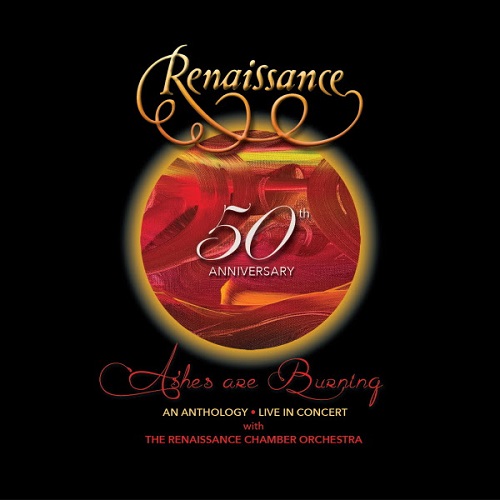
***
Share your feedback and suggestions for future columns with Ira at vinylconfessions84@gmail.com. Ira’s new book, “Hello, Honey, It’s Me”: The Story of Harry Chapin, is available for purchase here.


